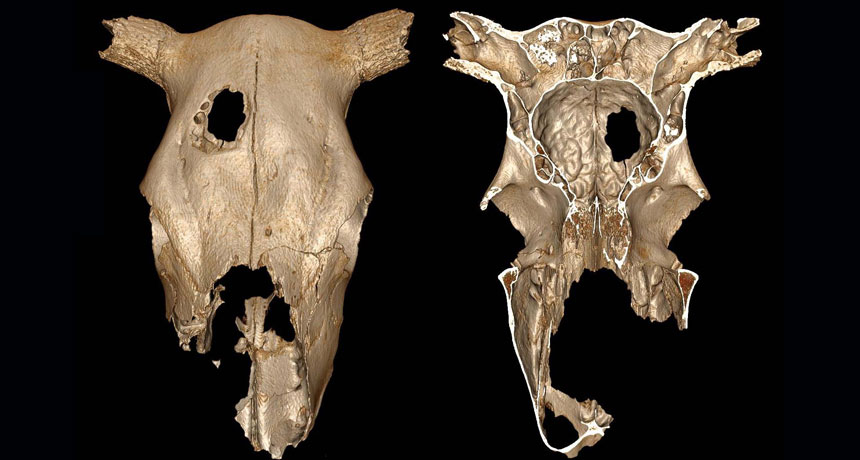A hole in an ancient cow’s skull could have been surgery practice
People may have been testing surgical techniques before operating on humans

HOLEY COW A section of bone missing from the right side of a more than 5,000-year-old cow skull (front and back views, shown) resulted from a surgical procedure, researchers say.
F. Ramirez Rozzi







